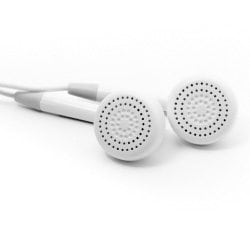MP3 Players an Indication that Corrections Officials Can Use Technology to Improve Operations

If you work in or closely with the corrections industry, or if you happen to be a fan of Prison Break or Oz television series, you probably know the litany of items in a jail cell: bars, locks, beds, sinks, latrines, lock boxes, and MP3 players.
MP3 players? Yep.
According to a recent article by Spin Magazine, those little devices that turned the music industry upside down and killed off CDs are slowly making their way into correctional facilities and into the hands of inmates. In fact, the article reports that between 15-30 percent of those incarcerated at the Idaho Correctional Institution in Orofino, a facility featured in the article, have the devices. The players are “electronically imprinted with the name of the inmate who bought it” to deter theft, and songs are stored in centralized systems called “Music Wardens,” according to the article.
“They’re a really good babysitter”
Allowing prisoners to have luxuries such as MP3 players is likely to stir up controversy as the trend inevitably becomes more prevalent in correctional facilities. But as sources in the article point out, the tiny music players benefit correctional facilities because:
- Officials control the music – Songs are pre-approved and music that contains messages of gang activity, violence or racism is not allowed.
- Inmates are occupied – Players function somewhat like a “babysitter” and keep inmates’ “minds from running and maybe creating some chaos.”
- Environment is safer – CDs can be broken and used as weapons, and parts from cassette players can be used in tattooing.
- They decrease contraband – CDs and cassettes are mailed in from outside sources and this can be a method for importing drugs and other illegal items.
“10 years behind”
MP3 players are nothing new. The first of these devices was launched in the late 1990s and the players quickly grew in popularity as iPods, Zunes and other players transformed the experience of listening to music. But as Brian Wittrup, operations manager for the Department of Rehabilitation and Corrections in Ohio, point outs in the article: “a good rule of thumb is that prisons are usually about ten years behind regular society when it comes to technology.”
That’s not to say that correctional facilities have completely shunned technology. Recently, many prisons across the nation have embraced video visitations, a digital process where inmates can visit with families and other people remotely. Proponents of this technology say these kinds of visitations are a positive addition to prisons because:
- Inmates who are located far from their homes can visit more frequently with their families.
- For children, video visitations can eliminate the trauma associated with visiting a correctional facility.
- Prisons can decrease spending and keep facilities safer since in-person visitation requires extensive manpower to transfer inmates and is sometimes the source of contraband transfer.
Looking forward
Will prisoners get their own version of Siri in the coming years – giving them a digital persona to converse with like those who have an iPhone? If correctional facilities are truly 10 years behind, it’s hard to say what inmates will have access to in the year 2023.
What we do know is that technology will march forward. Google Glass gives users a wealth of digital experiences from a small device attached to eyeglasses. Cars will soon drive themselves. And more than 50 percent of mobile users currently have a smartphone.
What we also know is that if video visitations and MP3 players in prisons indicate anything, it is that correctional officials will be looking to technology to make facilities run more efficiently, and those of us who supply them with products need to look to the cutting edge and seek opportunities to help them make this happen.
Dustin Coleman is a brand journalist for Norix Furniture and a contributor to the Safe Environments blog.